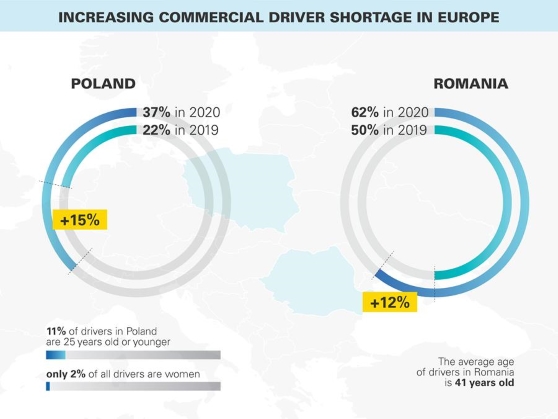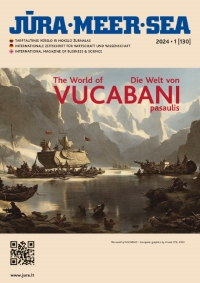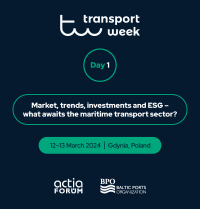
According to research from IRU, the European road transport sector is facing a 13% increase in driver shortage in 2020.
IRU carried out research amongst small and medium transport and logistics companies in a number of European countries, calculating the commercial freight driver shortage on the continent to rise from 23% in 2019 to 36% in 2020.
According to IRU’s report, Poland and Romania are two of the most heavily impacted European countries. In Poland, driver shortage stands at 22% and is expected to jump by 15 points this year.
In Romania, the situation is even more critical as the 50% driver shortage recorded in 2019 is foreseen to reach 62% this year.
Lack of women exacerbates driver shortage
Poland and Romania see the lowest rates of female drivers in Europe - 2% of the commercial driver workforce. Reasons deterring women from entering the profession include difficult working conditions, a lack of safe and secure parking areas, and long periods spent away from home.
Jan Buczek, President of the Association of International Road Hauliers in Poland (ZMPD) commented: “To encourage more women and young people into the profession, it is essential that improvements are made to guarantee better working conditions. There also needs to be greater state involvement in facilitating young people to become qualified drivers and help them overcome the high costs required for training and qualifications. It is also necessary to change transport regulations. To use the acquired qualifications, students must be able to work. However, the regulations only allow them to do so after they become 21 years old. There is a risk that before they reach this age, they will start working elsewhere and will not return to this profession.”
When it comes to young drivers, 11% of the workforce in Poland are younger than 25 years old, while in Romania, the average age of drivers sits at 41 years old. Although these figures are better than the European averages – 7% of European drivers are below 25 years old and the average age of commercial drivers is 45 in Europe, much remains to be done when it comes to bringing the profession closer to the youth.
High emigration rate worsening driver shortage in Romania
In Romania, a key cause of the driver shortage is down to high numbers of the population emigrating. Official figures show that in the last 10 years 3.4 million Romanians have left the country. (1)
Constantin Isac, President at UNTRR, the National Union of Road Hauliers from Romania commented: “There are a number of things that can be done in order to alleviate the worrying, and aggravating, driver shortage in Romania - including carrying out training for professional reconversion of other sectors’ unemployed personnel; decreasing the minimum age for drivers in the country from 21 to 18; and importing a non-EU qualified labour force.”
Concrete solutions
The driver shortage remains a universal problem - across Europe and beyond - and one that IRU is committed to work with its members and policy makers to help solve.
Some of IRU’s concrete actions and proposed solutions include:
Lowering and harmonising minimum age to become a professional driver
Development of a joint Charter together with the European Shippers’ Council (ESC) to improve treatment of drivers at delivery sites
Creation and funding of more and better safe and secure truck parking areas
IRU is already making significant progress in tackling the European driver shortage, securing €60 million worth of EU funding for the development of Safe & Secure Truck Parking Areas (SSTPAs) and setting up the Women in Transport Talks initiative to encourage more women into the profession. In addition, IRU has formed a number of partnerships, including with ILO (International Labour Authority) and ETF (European Transport Workers Federation).
IRU Secretary General Umberto de Pretto, commented: “While we have secured successes and set important ground work, more actions, including public-private cooperation, are needed urgently, to ensure our industry continues to strive and to deliver, as the lifeblood of the global economy.”
More info here











